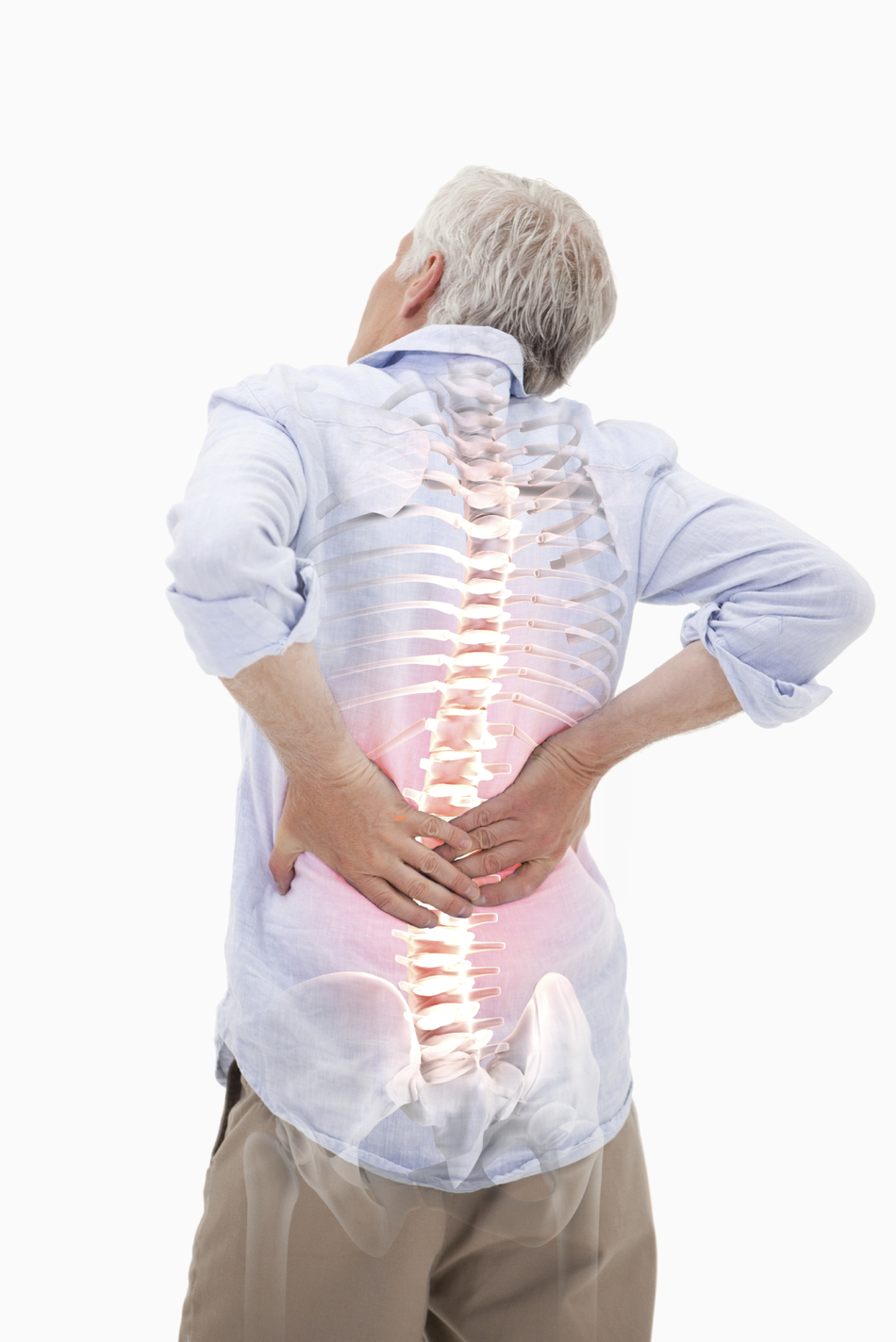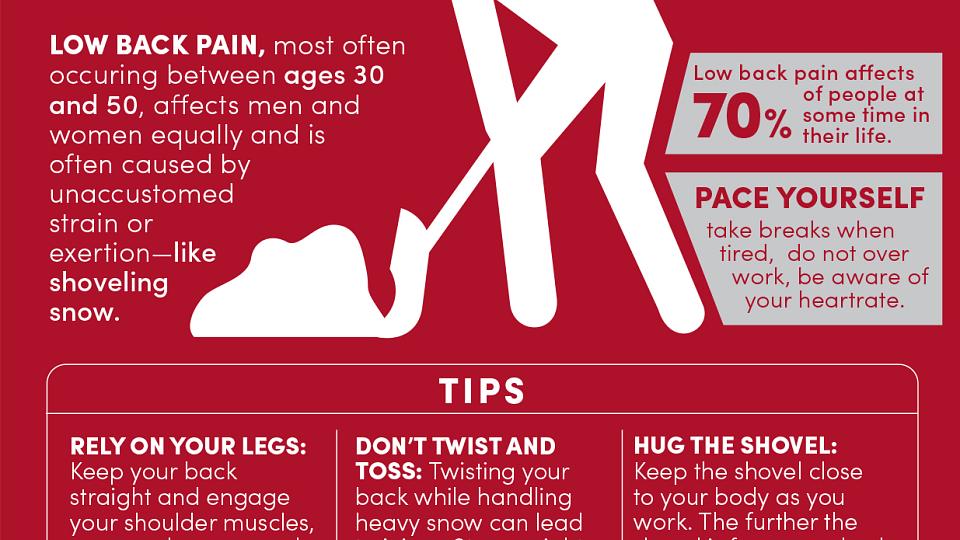
Dr. Miller: What is spinal stenosis? Could you have that as a problem? We're going to talk about that next on Scope Radio.
Announcer: Access to our experts with in-depth information about the biggest health issues facing you today. "The Specialists with Dr. Tom Miller" is on The Scope.
What is Spinal Stenosis?
Dr. Miller: Hi, I'm Dr. Tom Miller and I'm here with Dr. Ryan Spiker. He's an orthopedic surgeon and a professor of orthopedics here at the University of Utah. Ryan, what is spinal stenosis and who gets that?
Dr. Spiker: It's a great question. Spinal stenosis is very common, especially as we age. So in the elderly population, what happens is you get some reason for compression of the nerves in the low back. This is often from arthritis, degenerative changes, and slowly that compression can lead to pinching of the nerves in the low back, which leads to weakness and pain in the legs.
Spinal Stenosis Causes
Dr. Miller: So the anatomy is . . . tell me about that. The spinal cord goes down through the vertebrae, which are the bones of the spine and they travel through a tunnel. And what happens? That tunnel becomes narrow, is that what happens?
Ryan. Absolutely. So at the bottom of the spinal cord, there are still nerve roots and all those nerve roots end up innervating our legs, providing sensation and strength to our legs. And in that bottom part of the spine, just above the pelvis, it's common for arthritis to lead to hypertrophy or thickening of the ligaments, thickening of the disk and then compression of those nerve roots. And that compression leads to the pain that often shoots down into the legs.
Who Gets Spinal Stenosis?
Dr. Miller: So is spinal stenosis then a condition that someone who is a farmer or a laborer would get more commonly than somebody who was maybe working at a desk, or does it matter?
Sitting is a Risk Factor
Dr. Spiker: So it does matter. There's some effect of environment so what we do. Sitting is actually very bad for our backs and so that can be a risk factor in and of itself.
Genetics Can Play a Role
Dr. Miller: So a clerk or a professional who's sitting a lot might be at greater risk than even somebody who is out working all day?
Dr. Spiker: Absolutely. Depending on the type of the work and there are also some genetic risk factors that we've studied here at the U that have been shown to impact how often family members will get spinal stenosis.
Spinal Stenosis Symptoms
Dr. Miller: Well, tell me a little bit about what the symptoms are.
Pain When Standing or Walking
Dr. Spiker: The most common symptoms are pain or weakness or heaviness of the legs and it's usually worse when people are standing up and walking and improved when they bend forward. So if they're using a shopping cart or if they're using a walker, it feels much better. But again, it's worse when they attempt to stand up straight or extend their back.
Burning or Heaviness
Dr. Miller: What kind of pain is it? Is it a burning pain in both legs generally, if they're walking more than a block, I mean if it's severe?
Dr. Spiker: Often, people will describe some burning sensation. Commonly, it's a heaviness. It's a feeling that their legs are disconnected from their body. It can be a sharp pain that shoots down the spine. There's some variation with nerve pain, but invariably, it's worse with walking and usually goes down the back of the legs and can go all the way down into the feet.
Does Spinal Stenosis Affect Different Age Groups?
Dr. Miller: What age groups are most susceptible to spinal stenosis?
Dr. Spiker: So, for most patients, it's as they get older so usually in patients that are 50 or 60 or above. Certainly, there are causes of spinal stenosis such as fractures or really large disc herniations that can occur in a younger population, but the vast majority of patients are a little older.
How Common is Spinal Stenosis?
Dr. Miller: In a previous talk, we talked about sciatica and how that's caused by disc herniations mostly. Would spinal stenosis be more common or less common than disc herniation-related sciatica?
Spinal Stenosis vs. Herniated Disc
Dr. Spiker: So similar in different groups. So at a national level, certainly more common to have spinal stenosis than disc herniations that would cause somebody to see a spine surgeon like me. Most spinal stenosis patients will have some progression over time or continue to have symptoms, whereas most patients with disc herniations will get better on their own and this won't require to come in to see a spine surgeon.
Treating Spinal Stenosis
Dr. Miller: So tell me about the therapies, treatments, for spinal stenosis. Obviously, it depends on the severity of the problem.
Medications
Dr. Spiker: Absolutely. So our first line treatments are anti-inflammatory medications, non-steroidal anti-inflammatories.
Dr. Miller: Ibuprofen, naproxen, aspirin, things like that.
Dr. Spiker: Exactly. They help calm down some of the inflammation from the area of compression. And then getting people into physical therapy to help strengthen their core, take some of the stress off the bones and the nerves of the back.
Physical Therapy
Dr. Miller: Would you say that physical therapy is kind of an underused and underappreciated modality?
Dr. Spiker: Absolutely, absolutely. And often, I would say 60, 70, 80% of patients that I see in my clinic have not yet undergone physical therapy and anti-inflammatories. And sometimes, these simple interventions can really change the quality of their life.
Dr. Miller: How long would it take before someone would know if physical therapy was actually working?
Dr. Spiker: It's a great point that it does take time so often the first few weeks can be frustrating because it's difficult and it can cause some pain, but usually, within six to eight weeks, people start to see the fruits of their labor.
Surgery
Dr. Miller: In your experience, when then do you start talking about a surgical solution to the problem?
Dr. Spiker: So surgery is always the last option, it's never the first option. And fortunately, we can usually get people better with the anti-inflammatories, the physical therapy, some nerve medications, neuromodulatory medications like gabapentin, sometimes even injections. If all of these fail and the symptoms are progressive and really causing a change in their quality of life, that's when we talk about surgery.
Spinal Stenosis Surgery Outcomes
Dr. Miller: And surgical outcomes, how well does it work?
Dr. Spiker: So surgical outcomes are excellent in well-selected patients. So in patients that have gone through the right preoperative therapies and interventions, it ends up about 80-85% of people are much better after surgery than they were before.
Dr. Miller: That's a great outcome.
Dr. Spiker: Yes.
Dr. Miller: And over time, does that hold?
Dr. Spiker: It does. So we have great data up to about eight years now showing that people have continued benefit with surgical intervention for at least eight years and we certainly think longer.
Dr. Miller: Well, thanks, Ryan. So for our audience, basically surgery is the last option, but it has an excellent outcome. But prior to surgery you want to think about a good trial of physical therapy and the use of over-the-counter non-steroidals like ibuprofen and naproxen just to try to control the pain while you're testing physical therapy and working with your therapist.
Announcer: TheScopeRadio.com is University of Utah Health Sciences Radio. If you like what you heard, be sure to get our latest content by following us on Facebook. Just click on the Facebook icon at TheScopeRadio.com
Leg Pain in Older Adults Could Be Spinal Stenosis
Persistent leg pain that flares up while walking and fades with rest may point to a hidden condition of the spine. Orthopedic spine surgeon Darrel Brodke, MD, about how spinal stenosis can compress nerves, disrupt mobility, and quietly erode quality of life.



